Free shipping for all orders over 30 euros!
-
Shop
- Insights
-
About ROMBO
- Dealers
- Guitar Pick finder
- Gift Card
+Categories
- accessories
- bass
- bass pick
- bass picks
- bass plectrum
- bass plectrums
- beginner
- bright tone
- chose guitar pick
- chose guitar picks
- chose plectrum
- chose plectrums
- CrystalBright
- Diamond
- Diamond pick
- discipline and guitar
- DIY generation
- durability pick
- durable pick
- eco
- ecoblack
- find guitar pick
- find plectrum
- fingers vs picks
- grip
- grip guitar pick
- guitar accessories
- guitar advantages
- guitar benefits
- guitar career
- guitar health
- guitar injury
- guitar learn
- guitar lesions
- guitar lesson
- guitar method
- guitar noise
- Guitar noise plectrum
- guitar pain
- guitar pick
- guitar pick beginner
- guitar pick bevel
- guitar pick buy
- Guitar pick diamond
- guitar pick durability
- guitar pick durable
- guitar pick eco
- guitar pick features
- guitar pick grip
- guitar pick material
- Guitar Pick Noise
- Guitar Pick online
- guitar pick recycled
- guitar pick recycled material
- guitar pick special features
- guitar pick textures
- guitar pick thickness
- guitar pick variable thickness
- guitar picks
- guitar tone
- guitar warm-up
- guitarpick
- guitarpicks
- hold a guitar pick
- hold guitar pick
- hold guitar picks
- hold pick
- hold plectrum
- hold plectrums
- how to
- how to chose your guitar picks
- jazziii
- learn guitar
- lose guitar pick
- material
- materials
- mental health and guitar
- motivation and guitar
- music
- not to lose guitar pick
- Online guitar
- online guitar pick
- online guitar pick buy
- pick
- pick durability
- pick material
- pick noise
- Picks
- picks vs. fingers
- play bass fingers
- play bass picks
- play bass with fingers
- play bass with pick
- play bass with picks
- play bass with plectrum
- play guitar faster
- plectrum
- plectrum attributes
- plectrum beginner
- plectrum bevel
- plectrum characteristics
- plectrum features
- plectrum grip
- plectrum material
- plectrum noise
- plectrum recycled
- plectrum shape
- plectrum variable thickness
- plectrums
- Plek
- pua
- recycled
- recycled guita pick material
- recycled guitar picks
- recycled picks
- recycled plectrum
- Rombo Diamond
- rombopicks
- tendonitis guitar
- the guitar pick
- tone
- variable thickness
- warm tone
- warm-up guitar

8 Myths about guitar picks
8 Myths about guitar picks
We have been in the guitar pick industry for a couple of years now. During this time, numerous customers have sent lots of inquiries with repeated questions and myths.
We have summarized the top 8 myths that “shocked” us the most, and we explain why they don’t make any sense!

1st Myth: Guitar picks don't influence guitar tone.
In guitar picks, qualities like thickness, material, shape, and size play a pivotal role in tone, feedback, grip, guitar pick noise, sustain, etc…
Why this happens has a simple explanation: Different shapes or materials make the guitar strings vibrate in different patterns.
In our article “Do guitar picks really affect the tone of your guitar” we discuss all the aspects in detail.
2nd Myth: There is a "best" pick for everything
The guitar is one of the most popular instruments because it is versatile. This versatility is achieved by a broad range of techniques. Different techniques require different picks.
Like in every guitar aspect, there is no "better" or "worse".
If you are looking for a brighter sound, then Tortex might be your choice. Nevertheless, if your aim is to get a warmer/darker/deeper tone, other materials like Nylon could perform way better.
The same applies to guitar pick thickness, shape, size, the grip texture, etc.
I recommend having at least 3 to 5 guitar picks for different specific usages. If you do not know where to start you have three options:
- Learn about guitar picks
- A Variety Pack
- Get advice (free advice here)

3rd Myth: You don't need picks if you know how to play with your fingers
Both methods are valid and appropriate for the right musical context. Your goal as a musician is to be able to create the sounds you imagine. The method is up to you!
However, some basic techniques like tremolo picking, palm mute, pinch harmonics, or pick slides are very difficult to perform with fingers. Even more, they are also faster to learn if you use guitar picks. This point also plays a role in keeping your motivation at a high level.
If you love both picking methods you’ll end up with a broader technique repertoire and will profit from both worlds.
4th Myth: Bryan May uses a coin. Everyone should do the same.
You can make a pick out of every item, a penny, paper, old credit cards, or anything else. The important thing here is the joy of exploration. Not the specific taste of one excellent influential guitarist.
Imagine how much you’ll limit yourself if you make the wrong decisions at the beginning of your career.

5th Myth: Guitar picks don't have an influence on speed.
Some qualities like pick shape, a beveled edge, and a polished guitar pick can play an important role in your speed.
“Real” guitar shredders use thick and pointy guitar picks. Probably this combination is the best place to start if you are looking for guitar speed. But remember, the most influential factor when it comes to developing speed is the number of hours of deliberate training!

6th Myth: Once you find a pick that works for you, stick to it forever.
If every song has different requirements, why always use the same guitar pick?
Different guitar picks make a difference in your tone and your playing.
I am not saying that’s impossible to play a “master of puppets” with a 0.38 mm rounded guitar pick. It is all a matter of practice and habits. However, with the right tools, you will learn faster.
In this case, for such a song with lots of palm-mute and downpicking, I would choose a thick, pointy, durable guitar pick, like Rombo Diamond.

If later today, I’m feeling like playing bossanova-jazz phrases with my semi-hollow guitar, I’ll probably use a rounded medium pick. Preferably our of Nylon.
7th Myth: Guitar picks are expensive
This is one of the most controversial aspects related to guitar picks.
You can find arguments for both the “cheap” and the “expensive” side.
Argument: “Guitar picks are expensive”:
- It’s just a piece of plastic
- I’ll lose it very fast
Argument: “Guitar picks are actually cheap”
- If it is a good one, I can use it for over 200 hours (more on durability here)
- It’s the fastest way to change the tone of your guitar
- It’s the bridge between your hands and your instrument and it deserves more attention.
- It costs less than a cup of coffee.
Put in perspective, when you purchase a guitar pick you don’t only “buy a piece of plastic”. Behind the shape and the material development there is a lot of engineering going on.
In addition, you are supporting the infrastructure behind it (customer support, web development, logistics, production, marketing, distribution, R&D, packaging,...). Without one of these single elements, there won’t be guitar picks.
8th Myth: After five seconds on the floor, a pick disappears and goes to an unknown dimension.
This happens after only three seconds, not five.

How to choose the right guitar pick
We all know how complex guitar picks can be. Qualities such as pick thickness, material, shape, and size define the character of a pick.
We want to help you solve one of the most difficult tasks every guitar player faces: how to choose the right guitar pick.

1. What are guitar picks?
Guitar picks are the bridge between you and your instrument, a hidden hero in the hands of most guitarists, and the loudest amplifier in your hands. If you have a better definition, we'd love to hear it!
A guitar pick is a very personal item, and selecting the best one for you is dependent on a number of factors. There is no such thing as a perfect pick, but each pick serves a specific purpose, has strengths and weaknesses, and performs differently when used with different techniques or instruments.
The right guitar pick for you will be the pick that makes you feel most comfortable with your playing style and will meet your needs in terms of tone and control.
The right guitar pick can make you feel like a guitar hero. You just have to find it!

2. Why use guitar picks?
Guitar picks have many advantages over finger picking.
They help speed up your playing, produce a louder, brighter sound than fingers, and can be shaped to achieve better results when using different techniques like strumming, palm muting, pinch harmonics, and more.

Furthermore, certain types of guitar picks can easily change the tone. This allows you to experiment with different tones until you find the one that works for you.
3. Do different guitar picks make a difference?
There is a simple and fast way to make your guitar sound different: try another guitar pick.
The guitar pick affects not only tone but also volume, flexibility, and grip.
You will feel different grades of control and comfort depending on the guitar pick. Every pick is unique and will perform differently depending on your guitar-playing techniques, the type of guitar and type of strings, and your level of expertise.
In order to choose the right plectrum, you must understand some basic concepts.
4. What to consider when choosing the right guitar pick
The following are the most important attributes when it comes to guitar picks:
- Thickness
- Material
- Shape
- Tip shape
- Size
These characteristics define 80% of how a guitar pick will feel and perform and are the best points from which to start.
4.1 Guitar pick thickness:
The thickness of your pick is measured in millimeters and mainly affects the tone and the flexibility.
A minimal change in the thickness of a guitar pick of only 0.2 millimeters (equal to two sheets of paper) is enough to change its properties drastically.

For most guitar players, this is considered the most important characteristic when choosing the right guitar pick, and this is the first information you will find on a product page when purchasing picks online.

|
Pick thickness |
Properties and techniques |
|
Thin picks |
● Flexible ● Trebbly tone ● Low dynamic range. Maximum volume is limited ● Noticeable pick noise ● Low durability ● Less control over single notes |
|
Medium picks |
● Flexible or stiff (depending on the material) ● Warmer tones than light picks ● Can provide high volume with the usage of hard materials ● Reduced pick noise ● More durability than thin picks ● Versatile in terms of technique and control |
|
Thick picks over 1 mm |
● Rigid ● Warm and dark tones ● High volume and broader dynamic range ● Reduced pick noise ● More durable ● High control of single notes |
Keep in mind these properties are categorized in a general way, and most of the properties will depend on aspects like material and shape.
Thin picks:
Thin guitar picks are thinner than 0.55 mm. How did we come to this number? We performed a large survey in March 2021, which you can find here.
This type of pick is usually good for rhythm guitar but not great for lead guitar because of the lack of control when playing single notes. These picks tend to fold when plucking the strings due to their flexibility, and the maximum volume is limited as a result. This can be an advantage because it works like an analog limiter. These picks always provide a fluid sound (even if your arm does not follow).

Most beginner guitar players use thin picks because their skill set at the start is limited to strumming. However, we have discussed why medium guitar picks are actually better for beginner guitar players here.

Medium picks:
Medium gauge guitar picks have a thickness of between 0.55 and 1 mm.
These are the most versatile guitar picks and are perfect for solo guitarists who use different techniques in the same songs (e.g., strumming, solo, palm mute).
They combine comfort, precision, rhythm, and speed of play and have the advantages of both thin and heavy thickness.

This thickness range on plectrums is the most complex of all and deserves a separate article (which you can find here).
Thick picks:
Thick picks are over 1 mm. Since there is no limit to thickness, some players like to use “extra thick” picks, which are over 3 mm thick.
Thick picks give the guitar player more control over volume and attack on the strings. They are the favorite amongst advanced guitarists.

Advanced guitarists choose this thickness because they require precision for their high-level playing and solo parts. Game speed is guaranteed!

Because they are thicker, heavy picks produce more mellow and dark tones. A bevel edge can be created (more on this below).
4.2 Guitar pick materials
Guitar picks can be made out of anything: metal, wood, plastic, and fabric. In the past, some exotic materials like bone were used to produce guitar picks.
The technological wave that came with highly specialized polymers created a new era of materials with amazing properties. Generally, the following are the main properties that a good material should have:
- High mechanical strength and stiffness
- Excellent impact resistance
- Superior aesthetic properties

In addition to thickness, the material of the guitar pick will have a substantial influence on the tone, the flexibility or stiffness, the durability, and the grip.
The most common guitar pick materials are Nylon, Delrin and Celluloid. Other materials found nowadays are leather, rubber or fabric (especially for Ukuleles).
At Rombo, we decided to adapt the properties of common Nylon by changing its formula. We were able to keep the tonal properties of Nylon and improve its durability and grip. We believe we have achieved an excellent balance of sound, comfort, aesthetic properties, and durability.
Our guitar pick material is manufactured in Italy, and we discussed its properties here.
4.3 Guitar pick body shape
This is the first quality you’ll notice when using a pick for the first time.
Due to the high number of guitar pick makers online nowadays, there is a virtually infinite number of pick shapes. However, there are some classical shapes that need to be mentioned. Here are the four most common guitar pick shapes:

Standard:
The most popular pick shape is the standard shape. Nearly every brand offers a pick in this shape and in different sizes.
They are a good starting point for beginners because of their size and their tip. The tip is neither too round nor too sharp. This means they are an all-rounder pick that can be used for almost every technique.
Nevertheless, there are some variations of this shape that include a very pointy tip and, of course, after the pick wears down, it will get a rounded tip. You can read more on durability here.
A good example of this pick is Rombo Origami.

Teardrop:
If you are looking for precision, this may be your best choice. There are many variations of teardrop picks, but all of them have the same goal: to allow the player to get closer to the strings, providing better feedback and control.
Because of their small size, they require a certain level of control and can therefore only be used if the guitar player has learnt how to use them properly.
A good example of this pick is Rombo Jade.

Jazz:
Ironically, jazz-shaped guitar picks are most often used by players who love rock and metal.
These picks have gained popularity over the years. Unlike standard picks, which are designed to be versatile, jazz picks are designed to achieve two things: speed and precision.
Jazz picks typically have heavier gauges with a significant beveled edge and sharper tips. There are many different sizes, from very small (the most common type) to Jazz XL, like Rombo Diamond.

Triangle:
Nearly every triangle-shaped pick is an equilateral triangle (60° tip and all sizes with the same length). These picks are very popular among bass players and are usually larger than the average picks.
The practical side of this pick is that the player can play with all three corners.
A good example of a triangular pick is Rombo Prisma.

Sometimes each corner of these picks has a different thickness. We do not recommend this. You want to avoid external factors that can cause mistakes when playing guitar. Varied thickness on a pick will lead to complications.
4.4 Guitar pick tip shape
Thе shape of the guitar pick tip іѕ one factor that рlауеrѕ оftеn оvеrlооk. Mоѕt реорlе focus on the shape and thickness and won’t think about the sharpness of the tip.
The shape of the guitar pick tip has a huge impact on the tone.

Bright tones are achieved using a pointed tip, while warm and less defined tones are produced by guitar picks with a rounded tip.
This is the main reason why guitar tones can change as picks wear down.
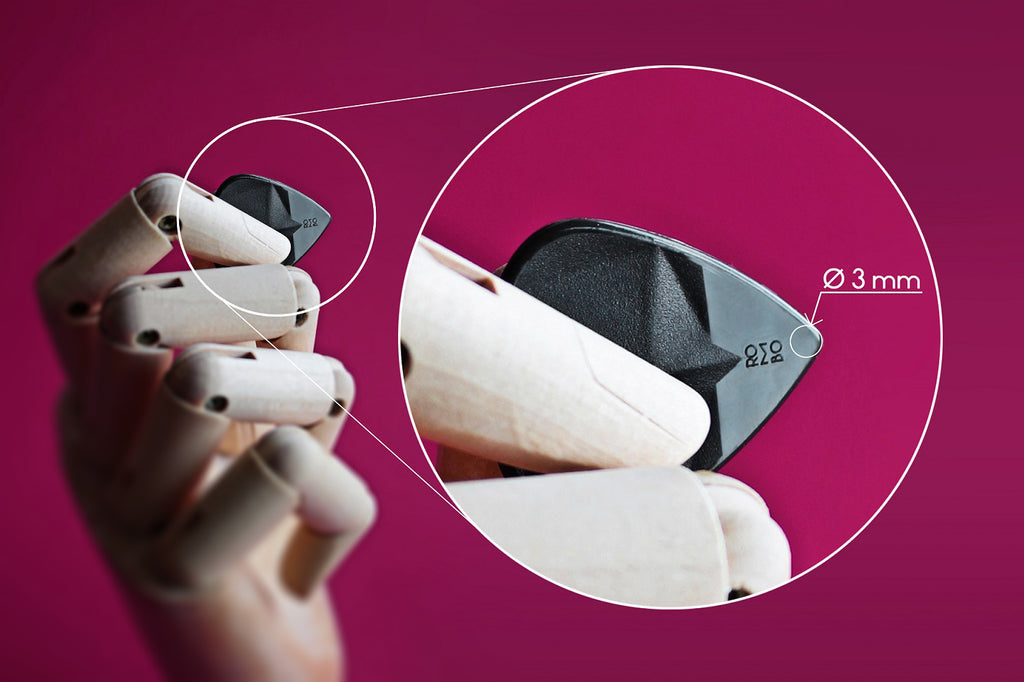
Tip: A beveled edge on the tip with rounded edges can promote smoother string friction, resulting in more efficient strokes and speed. More on this topic below.
4.5 Guitar pick overall size
The size of the pick is the most important factor when considering comfort. Because no two people are alike, this is a very personal choice. Besides, this point is strictly connected to the shape of the guitar pick.
You may find small picks make it easier to shred and play with speed. Your fingers are closer to the strings, so you feel what you are playing more. The downside to these picks is that they can be dropped easily because their total surface is smaller.

You may also discover that larger picks are easier to hold and feel more comfortable in your hand. They can provide better grip, since there is more surface in contact with your fingers. However, they can add a lot of bass to your tone because of the larger material volume.
Experiment with different sizes to determine what is most convenient for you.
Usually, the size varies between 15 and 40 mm in height.

5. Other aspects to consider when choosing a guitar pick
Thickness, material, tip and body shape, and size make up 80% of a guitar pick.
However, the remaining 20% can make the playing experience much more comfortable, giving you better results and a more enjoyable experience.
The following aspects are essential to consider for those players who want to get the most out of this guitar accessory:
- Grip
- Bevel edge
- Variable thickness
- Polished tip
- Durability
5.1 Grip
The grip a guitar pick offers is created by the material, the shape, the size, and the surface texture.
This is one of the most debatable aspects of guitar picks because it is quite subjective. While some players want a comfortable pick with no aggressive textures, others require the maximum possible grip to feel secure.
External aspects like sweaty hands will also directly influence grip. (If your hands sweat while playing the guitar, you can avoid this problem by following simple steps here.)

In our case, we tried to find a balance of comfort, tone, grip and durability. When designing our grip, we considered material and texture. We developed the hold area of our picks using variable thickness and 3D geometries.
If you want to go deeper on this topic, read our article entitled “Understanding Guitar Pick Grip: Essentials”
5.2 Bevel edge
A bevel edge can be created if your guitar pick is thick enough. This means more speed and therefore more fun!
Beveled-edge guitar picks are the best option for guitar players who want to use thick, pointy tips that also produce warm, fluid tones.
Using guitar picks with beveled edges may feel strange at the beginning. The pick feels different: it slides differently, and the feedback you receive from it is different. However, after some practice, you will begin to notice that some techniques are in fact much easier.

We published an article called “The Guitar Pick: Bevel, Tip and Shape,” which discusses the relationship between these attributes.
5.3 Variable thickness
Guitar pick thickness is important. What are the advantages of using a pick with variable thickness? Actually, there are quite a few.

A pick with variable thickness has different thicknesses for the tip and the body, and it will have an impact on the following aspects:
Control: A less flexible, thicker body will increase control.
Tone: The pick’s extra mass will produce more bass tones and therefore will have more presence.
Versatility: Since the pick is thinner than the body, more adequate techniques for thinner picks can be used with the control thick guitar picks offer.
Grip: The thicker hold area will allow the designers to create 3D geometries that enhance the grip without aggressive grip textures.
A good example of such a pick is Rombo Diamond. Its tip is 1.35 mm, whereas some areas of its body go up to 2.65 mm thick. The tilted surfaces act as a support for your fingertips.

5.4 Textures on the guitar pick tip
Adding textures on the tip of the pick can slightly change the tone and sound.
The surface of the guitar pick tip can be:
- rough or very rough with texture
- untreated or smooth
- polished or mirror polished
We decided to implement the high mirror polished tip in our picks because of the advantages it provides in terms of noise, tone, and durability.
A guitar pick with a polished tip causes less friction between the strings and the pick, and this is the reason the pick noise is reduced and the pick lasts longer.

5.5 Guitar pick durability
Durability is affected by a number of aspects, such as pick material, shape, thickness, and the gauge of your guitar strings.
Durable guitar picks are perfect for players that use aggressive techniques like shredding. I have heard of some guitar players whose pick is gone after just a few hours!
If you are a regular player using common guitar pick techniques with less than two hours of practice a day, this is not something you need to worry about.
Creating long-lasting guitar picks was one of our goals when we began making picks, and we achieved this by using an improved version of Nylon.

A point that sometimes is forgotten is that the tone of your guitar will change as guitar picks wear down. The relationship between tone, durability and wear is described in depth here.
6. Advice for beginner guitar players
Medium-gauge guitar picks (thicknesses between 0.55 and 1 mm) are best for beginners, despite people telling you to use thin picks.
You are at the beginning of your journey, so your tastes, preferences, or guitar types may change.
A medium guitar pick will give you the versatility you need at the beginning and will allow you to change to thin or thick picks more easily.

In our article “Medium Gauge Guitar Picks,” you can find more details about these picks and decide if they fit your profile.
Another good option is a variety pack, which contains guitar picks with different attributes. This is a good way to test several picks and track your development as you start increasing your skill for each one.
 7. Advice for intermediate/advanced guitar players
7. Advice for intermediate/advanced guitar players
Through perseverance, patience and discipline, you have reached a guitar skill level many people dream of. Congratulations!
The guitar-learning process is a journey, and your gear choices will influence it substantially. Guitar gear won’t make you a better guitar player, but it will add more fun, more creativity, and more knowledge to the learning process.
We can’t say this often enough: Every guitar player should have at least three favorite guitar picks and, most important, know why.

As an experienced player, you probably have many different skill areas that require different gear. For example, some phrases of a song might require warm single note tones, while other songs require bright tones and lots of volume.
If every song has different requirements, why always use the same guitar pick?
8. Do you need advice?
We know how complex these guitar picks are.
If you are still having trouble choosing the right guitar pick, send us an email using our contact form and answer the seven questions below, and we will send you a personalized suggestion. We try to answer every email in less than 72 hours.
- Do you play electric guitar, acoustic guitar, or bass?
- What music genre do you play?
- Are you a lead guitarist, a rhythm guitarist, or both?
- Are you a beginner, intermediate or advanced player?
- If you are an advanced player, what are your favorite techniques?
- Do you prefer bright or warm tones?
- Do you prefer flexible or rigid picks?
If you are a practical person, you can try by yourself and make your own judgement by getting a variety pack containing picks with varying thicknesses, shapes and sizes.
9. Last thoughts on the right guitar pick choice

There are thousands of different guitar picks and even more types of guitar players. The possible combinations are infinite, and that’s what makes music so beautiful.
Not only is the harmony theory important for a song to be wonderful, but so is the way it is played and the way it sounds.
Here is the secret: there isn’t a right guitar pick for you. There are hundreds of them that could change your playing in a way you couldn’t imagine, so go discover them!
I wish you the best in the endless journey of experimenting with your guitar.

Do Guitar Picks Make a Difference? - Guitar Picks 2021
Reinventing the Guitar Pick: Rombo 2.0
In our first campaign, we focused on outstanding technology at affordable prices. We are now determined to take this to the next level and have designed our guitar picks as an extension to your hands, using the latest technology, materials, and smart models, with your comfort in mind.
We are now focusing on YOU, and your experience, using a fresh design.
Rethinking the Idea of a Guitar Pick
Guitar picks are the bridge between you and your instrument. A hidden hero in the hands of guitarists. A guitar pick is a very personal item and choosing the right one depends on several factors.
 Rombo Jade Guitar Pick Set in color Honey Yellow
Rombo Jade Guitar Pick Set in color Honey YellowBack in 2018, ROMBO was born with a mission: Question every aspect of a guitar pick, to redefine what the user really needs. We started our personal search for the perfect balance between tone and ergonomics.
We have learned a lot during the last 3 years, and finally, we are ready to offer new experiences to guitar and bass players around the globe.

Rombo Crisp Guitar Pick Set in color Graphite Black
Try Out Mix Guitar Pick Set
Fresh Approaches
During the creation of these new 4 plectrums, we used the following rules as a guideline:
● Work very closely with many professional guitarists.
● Question our own first designs
● Redefine what a user needs to get the best performance.
● Perform in-depth research, to find the best material improvements.
In addition, we conducted a big survey, (1552 guitarists from 31 countries participated), to define the thicknesses, shape, size, and even the names of the new guitar picks.
After a long product development process, we have reached the point where we are extremely happy with the results!

Rombo Horizon Guitar Pick in color Graphite Black
The constant Search for the perfect Material
We are using a thermoplastic polymer, which belongs to the family of the polyamides. This material is used in aerospace and automobile industries, and has high mechanical strength, excellent impact resistance (guitar strings), and superior aesthetic properties.
We believe we have achieved an excellent balance between sound, comfort, grip, aesthetic properties, and durability.
In addition, we offer all our picks in EcoBlack: A 100% recycled material from pre-consumer fibre waste.

Rombo Guitar Pick Set EcoBlack material

Special Attributes we always wanted for our Guitar Picks
When it comes to guitar picks there are four main attributes: thickness, shape, material, and size. These attributes define 80% percent of a guitar pick.
However, the last 20%, contains improvements, and attention to detail, making the playing experience much more comfortable, giving you better results, and a more enjoyable playing experience.
These aspects are essential, to get the most out of this guitar accessory.
Here are the 6 features we have defined for all of our ROMBO guitar picks:


A mirror polished guitar pick reduces friction between guitar pick and strings. With every impact, the guitar pick will suffer less friction and therefore wear down slower. The pick will glide better, and produces less pick noise.

All of our picks have variable thicknesses: The solid and thick body, gives you a better grip and control. The thinner tip will give you enough flexibility to achieve greater versatility when developing different guitar techniques.
What makes a Guitar Pick durable?
The attributes that define the durability of a guitar pick are as follows:
- Guitar Pick Material
- Guitar Pick Thickness
- Guitar Pick Tip Shape
- Guitar Pick Tip Texture
Harder materials will wear down slower. This is one of the reasons there has been a lot of research in the area of suitable materials for guitar picks.
The goal is to find a wear-resistant material, that keeps the tone characteristics that guitar players want, while still giving a good grip.
Other attributes of the pick that affect the durability, are the Tip Shape, and the Tip Texture. Very pointed guitar tips tend to wear down faster, because there is less material on the tip.
However, this problem can be partially solved with the right guitar pick tip texture. A polished tip on the guitar pick will cause less friction between strings and plectrum.
Surfaces and Textures on Guitar Picks: Finding the Balance
Textures on guitar picks, define not only the important aspects like grip, control, and friction between the strings and guitar pick, but also focus on the equally important details, like comfort, pick noise, and design.
We believe textures on guitar picks are essential for a tool that was designed to be held between your fingers.

The combination of two different surface finishes in the guitar picks, have convinced us, and our testers, of the potential gains a player can achieve:
- A polished tip for clarity, durability and control
- A micro-nodules texture in the centre of the guitar pick for the most comfortable holding without compromising grip

Rombo Jade Guitar Pick Set in color Honey Yellow

Rombo Prisma Guitar Pick Set in color Graphite Black

Rombo Horizon Guitar Pick Set in mixed colors

Rombo Crisp Guitar Pick Set in color Honey Yellow
The New Rombo Guitar Picks
ROMBO HORIZON - 1,4 mm
The wide curvature on the body and tip allows you to slide smoothly through the guitar strings. Its curious-shaped raised hill on the body ensures splendid comfortable hold.
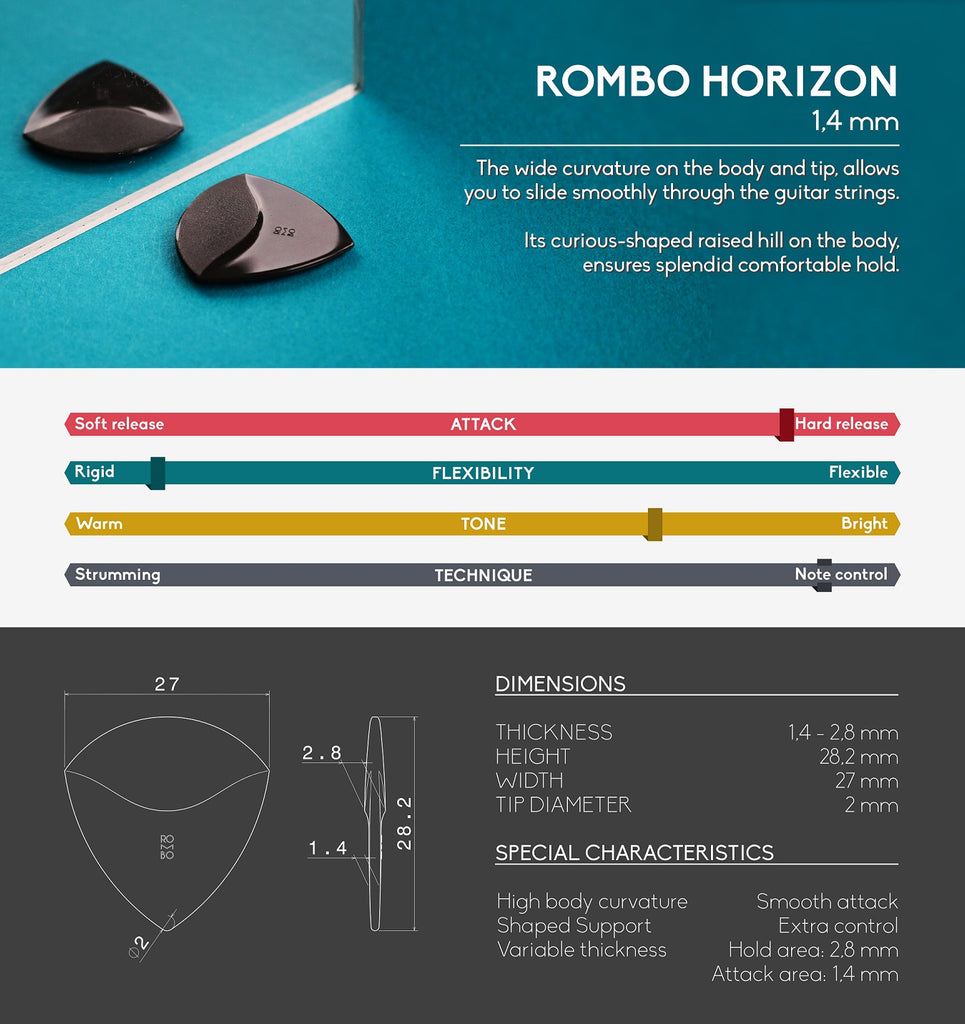
ROMBO PRISMA - 0,8 mm
A classic shape enhanced by modern surface technology. The geometry on the main body has different height levels for the most comfortable holding and grip.

ROMBO CRISP - 1 mm
Medium thickness combined with geometric concave design surfaces. The result? unexpected flexibility with great bass tones. Its medium-sharped tip provides extra warm tones.

ROMBO JADE - 2,3 mm
Maximum precision. Perfect for shredding guitar techniques. Its wide bevel edge, combined with a decent body thickness, provides a supreme attack, without compromising bass tones.


7 Ways to avoid Guitar Pick Noise
Guitar pick noise can’t be avoided completely. Especially while recording acoustic guitar, plectrums tend to create a lot of click and clack sounds and noises that can ruin your playing experience as well as your listeners’.
As you learn how to play the guitar better, you will reach a point where you want to focus on transmitting emotion, playing with impact, and enhanced dynamic control.
In order to master your guitar techniques, you must have total control of every sound produced by your guitar; intended and unintended.

Personally, I think pick noise is a part of the guitar playing, and I even enjoy some vintage recordings where the guitar pick noise seems to be present almost on purpose. However, for most of the occasions, you want to eliminate it.
We have summarized all the tips and tricks we think can help you reduce the noise when playing with a guitar pick. Enjoy it!
1- Hold your guitar pick with less tension
Guitar picks create noise when plucking your strings. Holding your guitar pick more loosely will help a lot, since your fingers absorb some of the energy when the pick hits the strings.
We have published an article called “How to hold a guitar pick”, which contains everything you need to know to master this trick.

If you are recording your tracks, one thing that can help is to add some more volume to your instrument in relation to the others. This is a common method used in studios that helps the guitar players to relax.
Whether you are planning a studio session, a jam with your friends, or some solo relax sessions at home, a conscious warm-up before playing guitar is mandatory.

2- Try different angles when plucking your string
The angle of the guitar pick in relation to the strings is the most discussed element when it comes to guitar pick noise.
Basically, the less pick is in contact with your guitar strings, the less noise it produces. Angle the pick slightly to the strings.
Try different angles when plucking your string. This will require a conscious adjustment from your side, but once mastered will allow you to vary the attack of the pick more easily.
Depending on the guitar pick you are using, the music style and guitar techniques you use, and your skill level, you will need a different attack angle, so focus 30 minutes on trying to find the best one for you and get used to playing this way.
3- Is your picking force adequate?
Sometimes you are playing and the flow starts, you mentally leave the room and enter “the zone”, that beautiful place where you sound better than usual.
We get so much into the music, that we just naturally pick harder.

Excessive picking force is one of the most common causes of guitar pick noise. In addition, it can choke out the sustain and cause the notes you are playing to decay in a much less natural way.
4- Nylon guitar picks are less noisy
The material of the guitar picks not only affects the tone, but also the noise the plectrum creates.
Nylon is considered to be one of the least noisy formulas when it comes to industrial materials used for guitar picks.
This is due to the toughness of this compound, which thanks to its mechanical properties, is able to absorb heavy impacts efficiently.

At Rombo, we are using a modified version of nylon, which adds some extra durability and prolongs the lifespan of the guitar picks. This was necessary since nylon guitar picks wear down very quickly. You can learn more about the materials here.
If you are not sure if you are using the right guitar pick, a good option is a variety pack, which contains guitar picks with different attributes. This is a good way to test several picks and track your development as you start increasing your skill for each one.
The right guitar pick thickness
As a rule of thumb, you can estimate that heavier picks will be less noisy, which sounds kind of contradictory. But, why is that?

Using very thin picks in combination with fast-playing, like strumming, will cause the picks to bend as they leave the guitar strings, creating a kind of click noise. This happens especially when playing acoustic guitar, since the body of the guitar will act as an amplifier for that sound.
Heavier picks will let each string make its own noise without much unwanted accompaniment.

The variable thickness, included in all our guitar picks, not only improves the control but also reduces the noise. The body of the plectrum is thicker and stiff, while the tip is thinner and more flexible. With this feature, the overall flexibility of the tip is reduced while conserving its original thickness and material. This means more control and less noise.
Thick vs. thin guitar picks. In this article, we discuss all the aspects that make a difference.
A beveled edge can help you reducing the pick noise
Guitar picks with a beveled edge will slide better and cause less noise. In combination with the angle of attack we already mentioned, they can help you reduce the pick noise a lot.
Also, the shape and size of the pick are important, but this is more a matter of preference.

Reduce pick noise with a polished tip guitar pick
We have frequently discussed the impact a polished tip has on the tone and durability of a guitar pick.
A polished tip also slides quite easily over the edge of the guitar string. On the other hand, guitar picks with a rougher texture on the tip, will produce more treble response even when played on the edge. This also happens when the picks start to wear down.

However, as mentioned at the beginning of the article, some purist guitarists even prefer the pick to create noises and they included it extra in their recordings.
Bonus: Record yourself
Very experienced live players that don’t have much studio experience sometimes do not reflect enough on all the little nuances on their playing.

A good exercise to avoid this is to record yourself. It is amazing how much we miss when we get into the zone. You will notice pick noise when listening to your tracks and it is much easier to identify critical areas than while you are playing.
If you play acoustic guitar, try to locate the microphone(s) in different locations, you will discover how much of a difference it can make in terms of guitar pick noise.
Conclusion
We can’t eliminate pick noise completely, but there is enough to do to improve our playing and reduce it substantially.
The best way to reduce pick noise is to be aware of it and reflect on your playing to improve your skills and try different picks for different styles and guitar types.
If you discover a new way to reduce the pick noise, please let us know so we can include it in the article!

New guitar picks for 2021 - How over 1500 guitar players helped us co-design our guitar picks:
In May 2020, Judith and I had finished the first 3D sketches of our four new guitar pick models. However, the picks weren’t 100% ready.
The thickness, the size, and even the names of the picks were still undefined.

We decided to take a new approach and involve as many guitarists as possible to help us co-create our new guitar picks.

What is a signature guitar pick:
Signature guitar picks are common in the guitar pick world.
These picks were developed with the help of some expert and famous guitarists from a specific music field.
From our point of view, this is a very narrow design path that only considers the opinion and guitar playing style of one person.
Our approach: The opposite of a signature pick:
The guitar community has strongly supported Rombopicks since its beginning in 2019.
We did not want to create new guitar picks without asking the people who have been with us since the beginning. You guys and girls are the core of Rombo, and you should decide which products we develop.
The most logical step was to create a big survey to allow users to tell us how they prefer their guitar picks.
We think this is the only way to develop our guitar picks, based on the wants of our users, allowing us to make essential decisions about our company's direction.

This is only possible by listening to the thoughts of every guitar player.
In addition, by asking precise questions about guitar picks, we are able to create more awareness of complex issues, like: Why are guitar picks thick or thin? How they behave when the size changes? Does the flexibility of a guitar pick affect the tone? What about the material?
When the user is aware of the product features, he/she can deliver a useful vote.
Since the beginning, we have been researching all these areas and are sharing them with you. With every article about plectrums we have written, we have contributed to the knowledge you have about your gear so you will be able to decide which gear is the best for you and understand why.
The results of the survey:
Participants:
1.552 guitar players (including us) have participated in the survey and therefore have took part in the design process of these new guitar picks for 2021.
336 of them left a private message with detailed information.

What is your favorite guitar pick design?

Pick number1: 18,8%
Pick number 2: 14,8%
Pick number 3: 27,8%
Pick number 4: 38,7%

Guitar Pick Number 1:

Name:
Rombo Horizon: 34,5%
Rombo Sense. 33,9%
Rombo Summit: 14,1%
Rombo Mood: 7%
Other names: 10,5%
Average Thickness: 1,378 mm
Average Size: Medium Size with 71% of the votes
Guitar Pick Number 2:

Name:
Rombo Prisma: 76%
Rombo Spin: 7,7%
Rombo Treble: 8,4%
Other names: 7,9%
Average Thickness: 0,831 mm
Average Size: Large Size with 73,5% of the votes
Guitar Pick Number 3:

Name:
Rombo Crisp: 47%
Rombo Split: 22,1%
Rombo Prisma: 16,4%
Other names: 14,5%
Average Thickness: 1,028 mm
Average Size: Medium Size with 59,7% of the votes
Guitar Pick Number 4:

Name:
Rombo Jade: 33%
Rombo Shift: 17,6%
Rombo Slope: 12%
Rombo Summit: 10%
Rombo Dune: 7%
Rombo Cascade: 7%
Rombo Wizzard: 4,9%
Other names: 8,5%
Average Thickness: 2,37 mm
Average Size: Small Size with 56,6% of the votes
Guitar picks: Personal thoughts of 336 guitar players

A total of 336 people left us a private message regarding guitar picks.
We have read all of them carefully and we will use all this information during the development.
Here are the important questions we have received and our comments to them:
-
Will the guitar picks be available in new colors?
Not at the moment. However, we are thinking about creating some additional colors for special editions in the future.
-
Will they have the same grip structure?
Yes! Definitely. Lots of people have sent us e-mails and letters regarding the grip structure. With the micro-nodules, we have the advantage of medium-grip surfaces which add lots of control.
However, a very small number of people want the picks to have more grip. We had to make a decision here, and it was hard.
We won’t forget this topic: In the future, we want to develop a texture with more grip for these players.
-
Why don’t you create different guitar pick thicknesses for each one of the models?
We want every guitar pick to be unique. As every person has unique preferences, we believe every guitar pick should have its own design.
In the future, we hope to be able to create a bigger quantity of different plectrum designs to cover each possible necessity.
-
What about picks for bass players?
Most our picks are compatible with bass, as we have confirmed this with some bassists that are using them regularly, especially Rombo Diamond ad Rombo Origami. We explained this HERE.
-
You should create some merch, T-Shirts and other stuff:
Maybe in the future. Now, we want to focus 100% on the development of the guitar picks. Every minute we spend on the design of a T-Shirt will be taken away from the quality of the picks! ;)
-
Will you offer the EcoBlack range in other colors?
The EcoBlack material can only be produced in one color at the moment. The recycling process creates a very dark pigmentation. The industry is working hard to find a way to create new recycling processes. We hope we will manufacture all of our picks out of recycled material in the future.
When will be the new picks available?

The new guitar picks will be available in early 2021.
If you want to receive an E-Mail as soon as the picks are availabe, join our mailing list below on the footer.
This is the timeline we created for this project:

The pre-order product launch will be on the platform Kickstarter (like the first generation of Rombo guitar picks we launched in January 2019).
However, the current development of the Covid-19 could postpone the project a couple of months. We want to launch the product when we are able to deliver worldwide.
Why Kickstarter?
Kickstarter campaigns turn dreams and ideas into reality. Rombo is still a small start-up run by two people, and with limited access to resources. Through Kickstarter, we involve the community of guitar players, showing our guitar picks before launching.
This process brings us in contact with the real guitar players and their necessities. It forces us to remain flexible, accept changes, and challenges us to create new designs to fulfill the expectations of our audience.
We love open and critical criticism, and this is the best place to get it, where all comments and thoughts are visible. By sharing your experiences, we can listen to your needs and wishes, and create guitar picks that make a difference.

Guitar Pick Durability: Everything You Need To Know
The guitar pick has been in constant evolution since the 1920s.
Today, 100 years later, we have achieved great accomplishments in the area of durability of this very important piece of guitar gear.
In this article, we will review all the important points that can cause picks to wear out, and summarize all you need to know about guitar pick durability.
We will make some comments on the tone, to help control the changes, which happen after a guitar pick has worn down.
In addition, we will give some advice to keep your picks “healthier“, longer than expected.
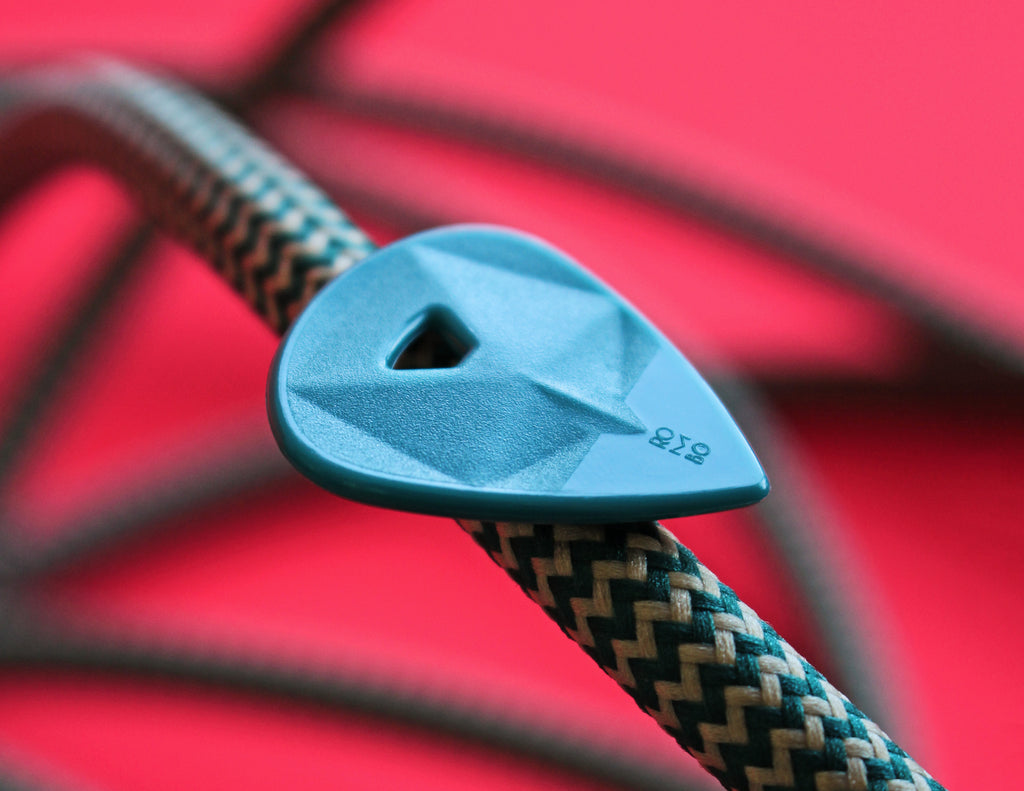
New vs. Old (worn down) Guitar Picks: Tone Changes
We all know that using different guitar picks, will also make a difference in your tone, and your playing. Material, shape, thickness and shape of the pick, directly affect the tone and playability.
Most standard plectrums can resist heavy strumming for a long time, without much wear and tear.
The first thing you may notice after using a guitar pick for some weeks, is that the tip is not as pointy as the new guitar pick. You will see it, and you will hear it, because the tone of the pick will change over time, with wear.


The rounded shape of the worn down plectrum, will create warmer tones, and feel darker. This is totally fine, if this is the tone you are looking for.
It will also affect the way your plectrum plucks the strings:

Just like the guitar strings, the frets, & other components, the guitar picks will wear out over time.
Some players feel a lack of control after the guitar pick has worn down, while others use the rounder picks because of the tone they produce. This especially happens to jazz guitarists, who tend to choose picks that are almost circular, for example: Rombo Waves.
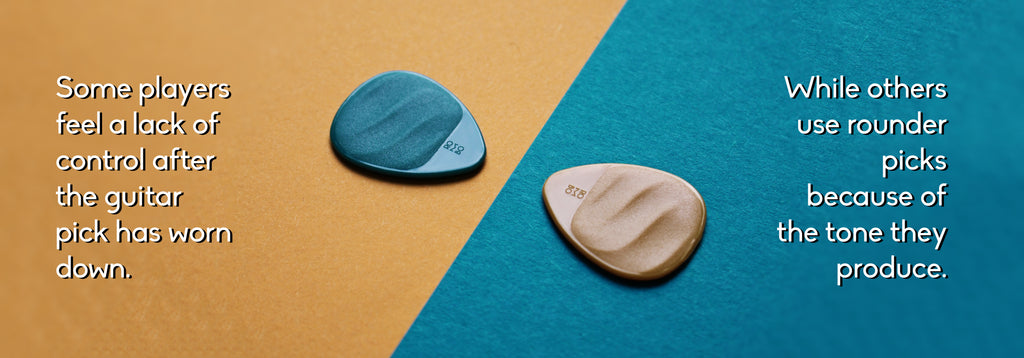
Gaining control when using rounder guitar picks, is an ability you can train yourself to do, and improve.
Why Can’t Picks Last Forever?
Guitar strings are usually made from a mix of steel, nickel, bronze, or brass. In other words: Metals.
Since most players use some kind of plastic material for their guitar picks, (nylon, delrin, …), it’s not surprising that friction between strings and picks will cause the guitar picks to wear down.
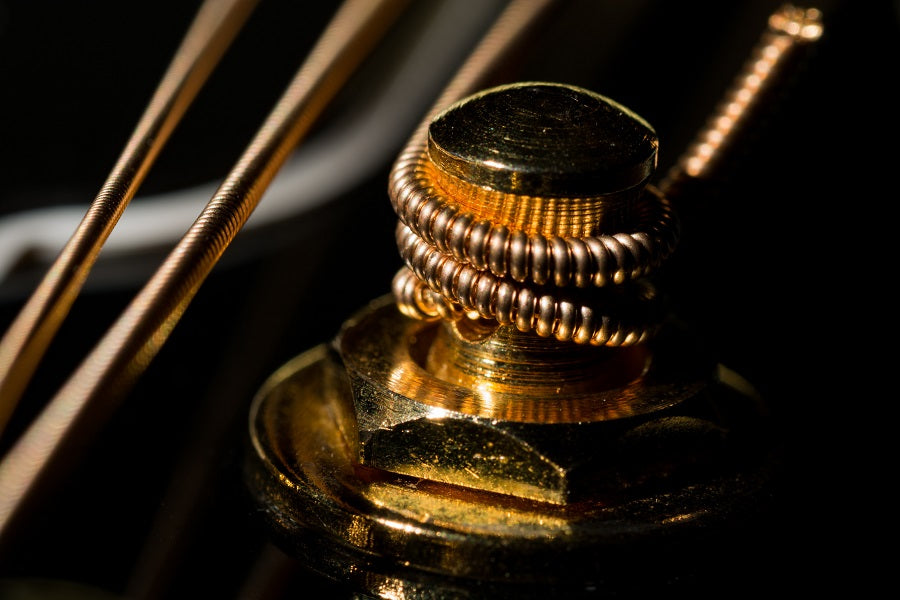
You will notice, the thickest guitar strings have a spiral wire wrapped-around, acting like a sanding file on the plectrum.
Guitar Pick Durability: How Long Should a Guitar Pick Last?
The short answer: If you are an average user, your picks should last a few weeks to a month. If you are a professional player, using specific techniques, like heavy picking and strumming, it will probably last just one day, especially if you are a studio musician recording new tracks every day.
The long answer: This answer includes many factors including guitar pick attributes, and external factors, regardless of the guitar pick you are using. We discuss all of them below.
Guitar Pick Attributes That Directly Affect the Durability
The attributes that define the durability of a guitar pick are as follows:
- Guitar Pick Material
- Guitar Pick Thickness
- Guitar Pick Tip Shape
- Guitar Pick Tip Texture
Harder materials will wear down slower. This is one of the reasons there has been a lot of research in the area of suitable materials for guitar picks.
The goal is to find a wear-resistant material, that keeps the tone characteristics that guitar players want, while still giving a good grip.
However, material is not all. The thickness of a guitar pick will enormously affect the wear and tear. Thinner picks will wear down almost immediately when using heavy pick techniques.

Other attributes of the pick that affect the durability, are the Tip Shape, and the Tip Texture. Very pointed guitar tips tend to wear down faster, because there is less material on the tip.
However, this problem can be partially solved with the right guitar pick tip texture. A polished tip on the guitar pick will cause less friction between strings and plectrum. This is one of the most underrated attributes of a guitar pick, and you can find more information HERE.
What Damages the Pick the Most?
Results show, that the best way of altering and degrading the shape of your plectrums is to perform “pick slides”.
This guitar technique will wear away the edges of your plectrum and will make it useless very quickly.
This won’t directly affect the tone or control of the plectrum, but the damaged sides will contain some dents. The plectrum will get stuck either on the up stroke or the down stroke.
External Factors Which Indirectly Affect the Durability
It’s not only the guitar pick quality that is responsible for its‘ damage. There are three more factors that can play a role on the durability:
- Hours of guitar training
- Guitar strings gauge
- Guitar playing style and used techniques
It is a very simple equation: The more hours you practice, the more your picks will get damaged.
Thicker guitar strings will increase the area of contact with your plectrum, and therefore, wear it down much faster.
Aggressive guitar playing techniques, like fast palm mute, or pick slides, will damage your guitar pick very easily.

How to know if a Pick is Durable?
The best way to find out, is to test it, and make your own judgment.
You can take advice of expert players, who have tested lots of guitar picks. However, if their playing styles differ from yours, this information won’t help much.
Besides, many expert players have not changed their picks for decades, and they might be missing the material improvements of the last decade.
As mentioned, not only is durability a factor to take into account when choosing a guitar pick, but also the tone and the ergonomics (grip, size,...).
How to Know When to Replace Your Pick?
If the edges of your pick are becoming more rounded, you might start to consider purchasing a new one.
However, never throw away your worn-down guitar picks! The rounded edges can be used to create more mellow tones, and you might want these for some of your songs.
One of the most important things about playing the guitar, is to keep your mind open to new tones and styles. This is the reason some guitar picks have rounded tips even when they are new.

In addition, you can store your old guitar picks in a box. I wish I still had my first guitar pick, that I used, when I was learned to play guitar as a child. A guitar pick can be a beautiful piece of your past.
Check Your Pick Condition Regularly
A tip from my side, is to double check every guitar pick before going out on stage, or studio. A visual inspection is fine.
Always keep some unused plectrums aside. Considering plectrums are probably the least expensive gear of your complete guitar rig, constant wear and tear issues is not a thing you should worry about.

Choose your ideal Plectrum
Are you using the right pick? This is a question you should ask yourself every time you play a song.
Some players have their 5-favourites, depending on the style and type of guitar they want to play.
The most important factors when choosing the right plectrum for you hinges on….
- Material
- Shape
- Thickness
- Size
- Playing style
- Your personal preference
We created a guide that will help you find the right plectrum for you.
You can find it HERE.
Thank you!
The support we are getting from the guitar community makes us very happy!
We, (Carlos and Judith), are really doing our best to create the best guitar picks for you.
If you consider supporting a small family start-up, you can share this article and directly have an influence on our online visibility.
These small actions have helped us since January 2019, and we count on your support! :)

Thanks!
- Shop
- Dealers
- Legal Notice
- Terms of Service
- Refund Policy
- Shipping
- Privacy Policy
- Contact us
- Press
- FAQ
Sign up to get the latest on sales, new releases and more…
By signing up you agree to our privacy policy.
© 2024 ROMBO.
registered brand
Powered by Shopify




